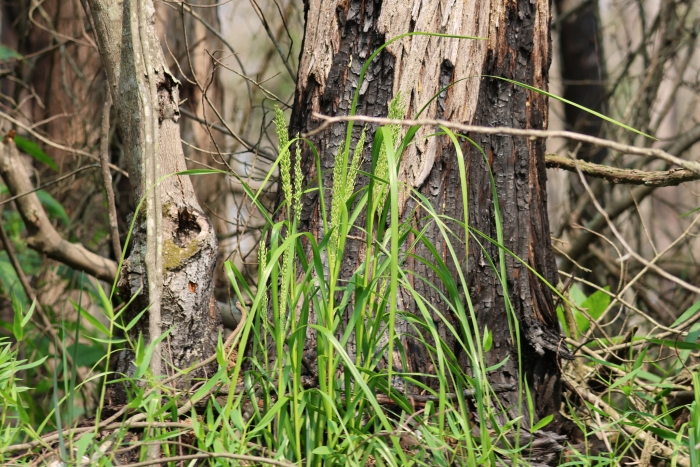Obtuse Mannagrass
(Glyceria obtusa)
Obtuse Mannagrass (Glyceria obtusa)
/
/

er-birds
CC BY 4.0
Image By:
er-birds
Recorded By:
Copyright:
CC BY 4.0
Copyright Notice:
Photo by: er-birds | License Type: CC BY 4.0 | License URL: http://creativecommons.org/licenses/by/4.0/ | Rights Holder: er-birds | Publisher: iNaturalist | Date Created: 2023-08-03T09:41:58-07:00 |

























Estimated Native Range
Summary
Glyceria obtusa, commonly known as obtuse mannagrass, is a perennial grass native to freshwater tidal marshes, wet meadows, and the edges of ponds and streams across eastern North America. It typically grows up to 3 feet tall and forms dense clumps of bright green, lance-shaped leaves. The inflorescences are loose panicles that appear in late spring to early summer, with flowers that are not particularly showy but are ecologically significant for wetland habitats.
Obtuse mannagrass is valued for its ability to stabilize soil and filter water, making it an excellent choice for wetland restoration projects and erosion control in riparian zones. It is also a beneficial food source for waterfowl and other wildlife. In cultivation, it requires consistently wet or muddy soils and can tolerate a range of light conditions from full sun to partial shade. While it is not typically used in ornamental landscaping, it serves an important function in naturalized plantings and wildlife gardens. Care should be taken as it can spread vigorously in ideal conditions, potentially becoming invasive in areas outside its native range.CC BY-SA 4.0
Obtuse mannagrass is valued for its ability to stabilize soil and filter water, making it an excellent choice for wetland restoration projects and erosion control in riparian zones. It is also a beneficial food source for waterfowl and other wildlife. In cultivation, it requires consistently wet or muddy soils and can tolerate a range of light conditions from full sun to partial shade. While it is not typically used in ornamental landscaping, it serves an important function in naturalized plantings and wildlife gardens. Care should be taken as it can spread vigorously in ideal conditions, potentially becoming invasive in areas outside its native range.CC BY-SA 4.0
Plant Description
- Plant Type: Grass
- Height: 1.5-3 feet
- Width: 2-3 feet
- Growth Rate: Rapid
- Flower Color: N/A
- Flowering Season: Summer, Fall
- Leaf Retention: Deciduous
Growth Requirements
- Sun: Part Shade, Full Shade
- Water: High
- Drainage: Medium, Slow
Common Uses
Bird Garden, Erosion Control, Water Garden
Natural Habitat
Freshwater tidal marshes, wet meadows, and edges of ponds and streams
Other Names
Common Names: Blunt Mannagrass
Scientific Names: , Glyceria obtusa, Panicularia obtusa, Plotia brizoides, Plotia brizoides, Poa obtusa,
GBIF Accepted Name: